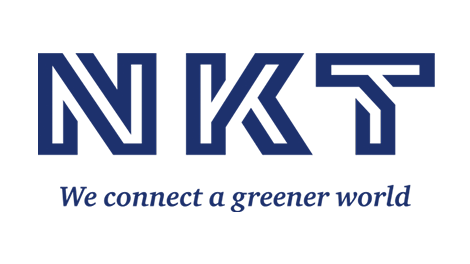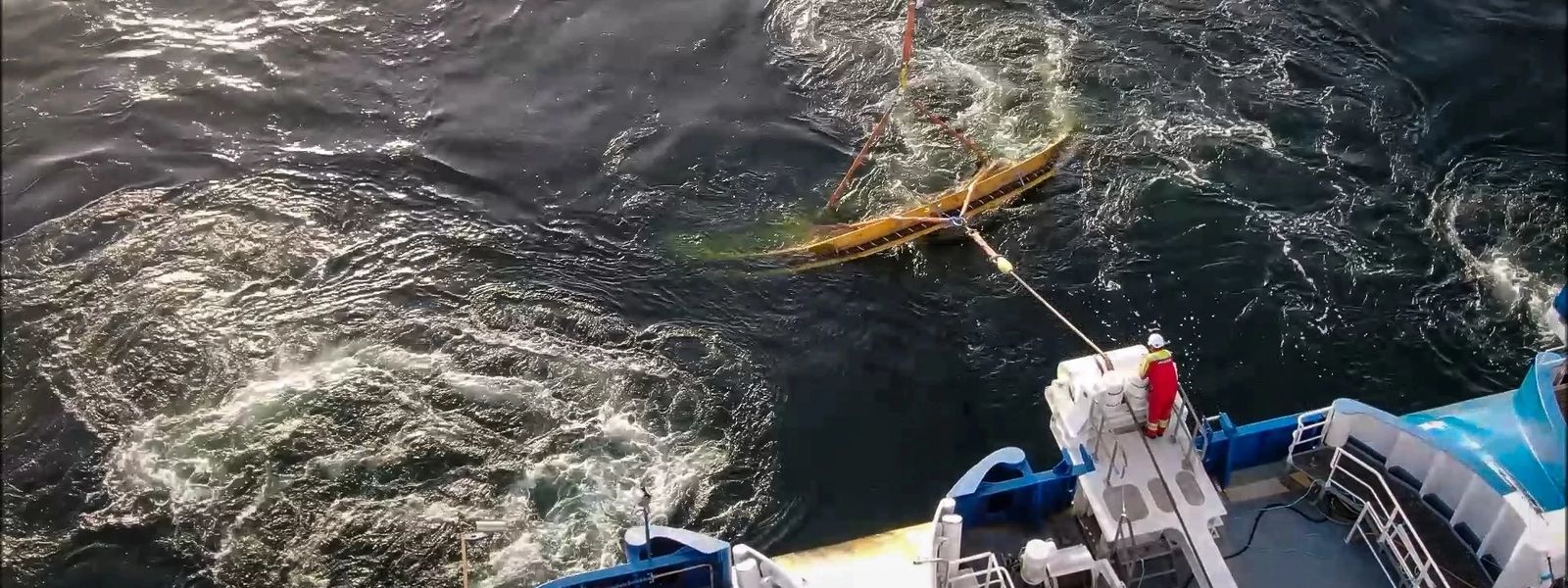NKT – NKT supplies adaptive power cable joints to Energinet as spare parts for all their HVAC offshore cable systems
NKT has delivered the first order for its new Adaptive Rigid Sea Joint to the Danish transmission system operator (TSO) Energinet.
The innovative power cable joint allows Energinet to optimize inventory and minimize waste as the joint can be adapted for several cable types from different suppliers.
The Adaptive Rigid Sea Joint developed by NKT can lead to reduced costs of storage, fewer spare parts and less inventory for offshore cable owners as it is compatible with several power cable types. The adaptive joint is well-suited as a straight joint for a repair on any of the approximately 350 kilometers of HVAC offshore cables in Energinet’s grid. With a transmission grid comprising many different and relatively short HVAC power cable connections, Energinet is ideally positioned to take advantage of the new joint.
– We are proud to provide this new solution to Energinet, which is a long-standing partner to NKT. By delivering the Adaptive Rigid Sea Joint we are solving a challenge in the market and the contract with Energinet is a testament not only to the strong collaboration between our companies but also to their commitment to jointly optimize performance and sustainability of their activities, says Rico Bruus, Director, Head of Service Denmark at NKT.
Joint designed for multiple types of power cable systems Traditional offshore repair joints are designed for the specific system they are intended for, resulting in dedicated spares being stocked for every cable design in an operator’s grid. However, with operators often owning multiple different cable systems and failures of each individual cable occurring very rarely, many of the spares remain in stock unused for many years. This leads to high costs associated with procuring and storing the spares, as well as increasing waste from perishable components that must be periodically replaced if not used.
To address this, NKT has developed the Adaptive Rigid Sea Joint, which can serve as a spare joint for a broad range of HVAC offshore cables. The joints utilize a platform of base components, which can be shared across cable types. This reduces the number of spares required in stock, while reducing the need for their replacement due to expiry.
– We are very satisfied with the ongoing cooperation with NKT. The delivery of the Adaptive Rigid Sea Joints will improve our spare parts strategy resulting in reduced costs and waste while improving the resilience of our offshore grid infrastructure. Although we hope we will only need them sparingly, we are happy we can now rely on NKT’s experience and capabilities in the area of repair of offshore cables from different suppliers, says Rene Dogan, Offshore Cable Specialist at Energinet
The use of the Adaptive Rigid Sea Joint spans voltage levels from 132 kV through 150 kV up to 300 kV and covers more than 10 power cable designs from various manufacturers. The joints can also be expanded further to cover additional cable designs or transitions between different types.
SourceNKT
EMR Analysis
More information on NKT: See the full profile on EMR Executive Services
More information on Claes Westerlind (President and Chief Executive Officer, NKT): See the full profile on EMR Executive Services
More information on Will Hendrikx (Members of the Global Leadership Team, Chief Operating Officer/Deputy Chief Executive Officer, NKT): See the full profile on EMR Executive Services
More information on Rico Bruus (Director, Head of Service Denmark, NKT): See the full profile on EMR Executive Services
More information on Energinet: https://en.energinet.dk + Energinet is an independent public enterprise owned by the Danish Ministry of Climate, Energy and Utilities. We own, operate and develop the transmission systems for electricity and natural gas in Denmark.
More information on Thomas Egebo (President and Chief Executive Officer, Energinet): https://en.energinet.dk/about-us/organisation/executive-board/ + https://www.linkedin.com/in/thomas-egebo-23049916/?locale=en_US
More information on Rene Dogan (Offshore Cable Specialist, Energinet): https://www.linkedin.com/in/ren%C3%A9-dogan-89403435/
EMR Additional Notes:
- HVDC Light:
- HVDC Light is the successful and environmentally-friendly way to design a power transmission system for a submarine cable, an underground cable, using over head lines or as a back-to-back transmission. HVDC Light is HVDC technology based on voltage source converters (VSCs).
- HVDC Light is designed to transmit power underground and underwater, also over long distances. It offers numerous environmental benefits, including “invisible” power lines, neutral electromagnetic fields, oil-free cables and compact converter stations.
- As its name implies, HVDC Light is a dc transmission technology. However, it is different from the classic HVDC technology used in a large number of transmission schemes. Classic HVDC technology is mostly used for large point-to-point transmissions, often over vast distances across land or under water. It requires fast communications channels between the two stations, and there must be large rotating units – generators or synchronous condensers – present in the AC networks at both ends of the transmission. HVDC Light consists of only two elements: a converter station and a pair of ground cables. The converters are voltage source converters, VSC’s. The output from the VSC’s is determined by the control system, which does not require any communications links between the different converter stations. Also, they don’t need to rely on the AC network’s ability to keep the voltage and frequency stable. These feature make it possible to connect the converters to the points bests suited for the AC system as a whole.
- HVDC (High-Voltage Direct Current):
- Key enabler for a carbon-neutral energy system. It is highly efficient for transmitting large amounts of electricity over long distances, integration of renewables and interconnecting grids, opening up for new sustainable transmission solutions.
- HVDC Links:
- The first successful HVDC experimental long distance line (37 miles) was made at Munich, Germany in 1882 by Oskar Von Miller and fellow engineers.
- HVDC allows power transmission between AC transmission systems that are not synchronized. Since the power flow through an HVDC link can be controlled independently of the phase angle between source and load, it can stabilize a network against disturbances due to rapid changes in power.
- An HVDC line has considerably lower losses compared to HVAC over longer distances.

- Neu Connect (the first power interconnection between Great Britain and Germany): https://neuconnect-interconnector.com +
- The NeuConnect Interconnector will create the first direct power link between Germany and Great Britain, connecting two of Europe’s largest energy markets for the first time. Around 720km of land and subsea cables will form an ‘invisible highway’ allowing up to 1.4GW of electricity to move in either direction, enough to power up to 1.5 million homes over the life of the project.
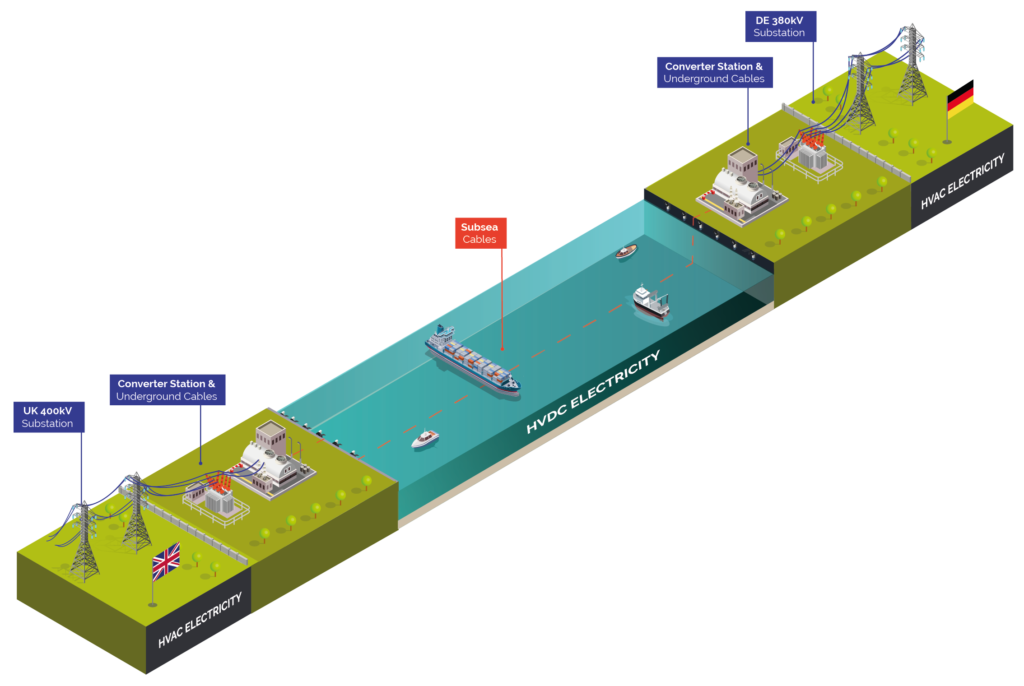
- The Tyrrhenian Link: https://www.terna.it/en/projects/public-engagement/Tyrrhenian-link +
- Connecting Sicily with Sardinia and the Italian peninsula via a double underwater cable: a new electricity corridor at the centre of the Mediterranean; the Tyrrhenian Link. At 950 kilometres long and with a capacity of 1000 MW, this is an infrastructure initiative of international significance, another step towards a more sustainable energy future. The link will improve electricity exchange capacity, facilitate the development of renewable energy sources, and the reliability of the grid.
- The overall project involves two sections: EAST from Sicily to Campania and WEST from Sicily to Sardinia.
- The East section is 480 kilometres long and connects the Fiumetorto landing point, in the municipality of Termini Imerese in Sicily, with the landing point in Torre Tuscia Magazzeno, near Battipaglia in Campania.
- The WEST section is approximately 470 kilometres long and connects the Fiumetorto landing point to the one in Terra Mala, in Sardinia.

- The Viking Link: https://viking-link.com +
- World’s longest power interconnection. the Viking Link is a 1400 MW high voltage direct current (DC) electricity link between the British and Danish transmission systems connecting at Bicker Fen substation in Lincolnshire and Revising substation in southern Jutland, Denmark.

- The North Sea Link: https://northsealink.com/ + North Sea Link is a 720 kilometre subsea interconnector linking the electricity systems of the UK and Norway. The 1400 megawatt interconnector stretches from Blyth in the UK, across the North Sea, to Kvilldal in Norway.
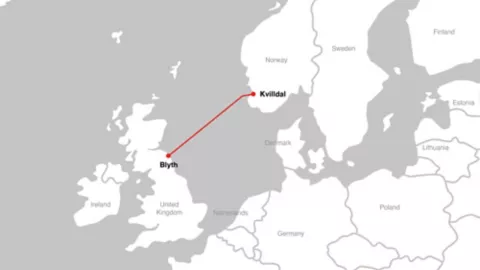
- The Hertel–New York interconnection line: https://www.hydroquebec.com/projects/hertel-new-york-interconnection/ + The Hertel–New York interconnection line project aims to supply clean, renewable energy to New York City. In Québec, the project involves the construction of a line that will span 57.7 km (56.1 km underground and 1.6 km underwater). This 400-kV direct current line will connect Hertel substation in La Prairie to an interconnection point in the Rivière Richelieu at the Canada–United States border.

- The Biscay Gulf Project: https://www.inelfe.eu/en/projects/bay-biscay + The electricity interconnection between Gatika (Spain) and Cubnezais (France) will be the first fundamentally submarine interconnection between Spain and France. This project will increase the exchange capacity from 2,800 to 5,000 MW, improving the safety, stability and quality of electricity supply between the two countries and also with the rest of Europe.
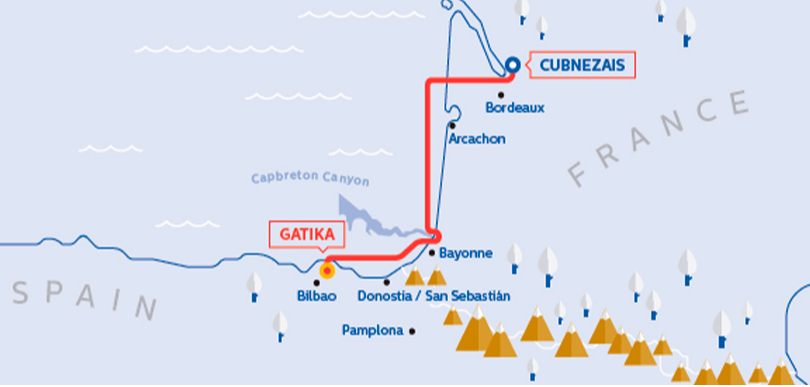
- The Eastern Green Link 2 (EGL2): https://www.ssen-transmission.co.uk/projects/project-map/eastern-green-link-2/ + The Eastern Green Link 2 project is a proposal to install a sub-sea high-voltage direct current (HVDC) cable from Sandford Bay, at Peterhead, to Drax in England. There is currently a large amount of forecasted generation that will require connection to the electricity network in the coming years and as such we are proposing several upgrades to the transmission network across the north of Scotland to facilitate this. The Eastern HVDC Link will play a key role in helping achieve our Net-Zero targets.
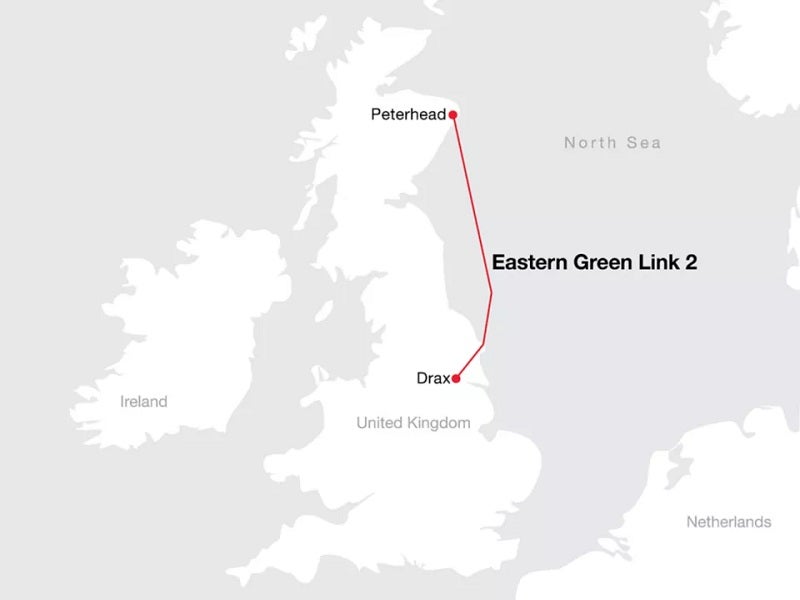
- The EuroAsia Interconnector: https://euroasia-interconnector.com/ + EuroAsia Interconnector Limited is the official EU project developer of the 2,000MW electricity interconnector between Israel, Cyprus, Greece and Europe. The EuroAsia Interconnector is a leading European Project of Common Interest (PCI) labelled as an EU “electricity highway” connecting the national electricity grids of Israel, Cyprus and Greece through a 1,208 km subsea HVDC cable.
- The EuroAsia Interconnector comprises the electricity interconnection between the grids of Israel, Cyprus, Greece through a subsea DC cable and with HVDC onshore converter stations at each connection point, with a total capacity of 2000MW. The project is an energy highway bridging Asia and Europe, with a total length of 1,208 km. It creates a reliable alternative route for the transfer of electric energy to and from Europe.
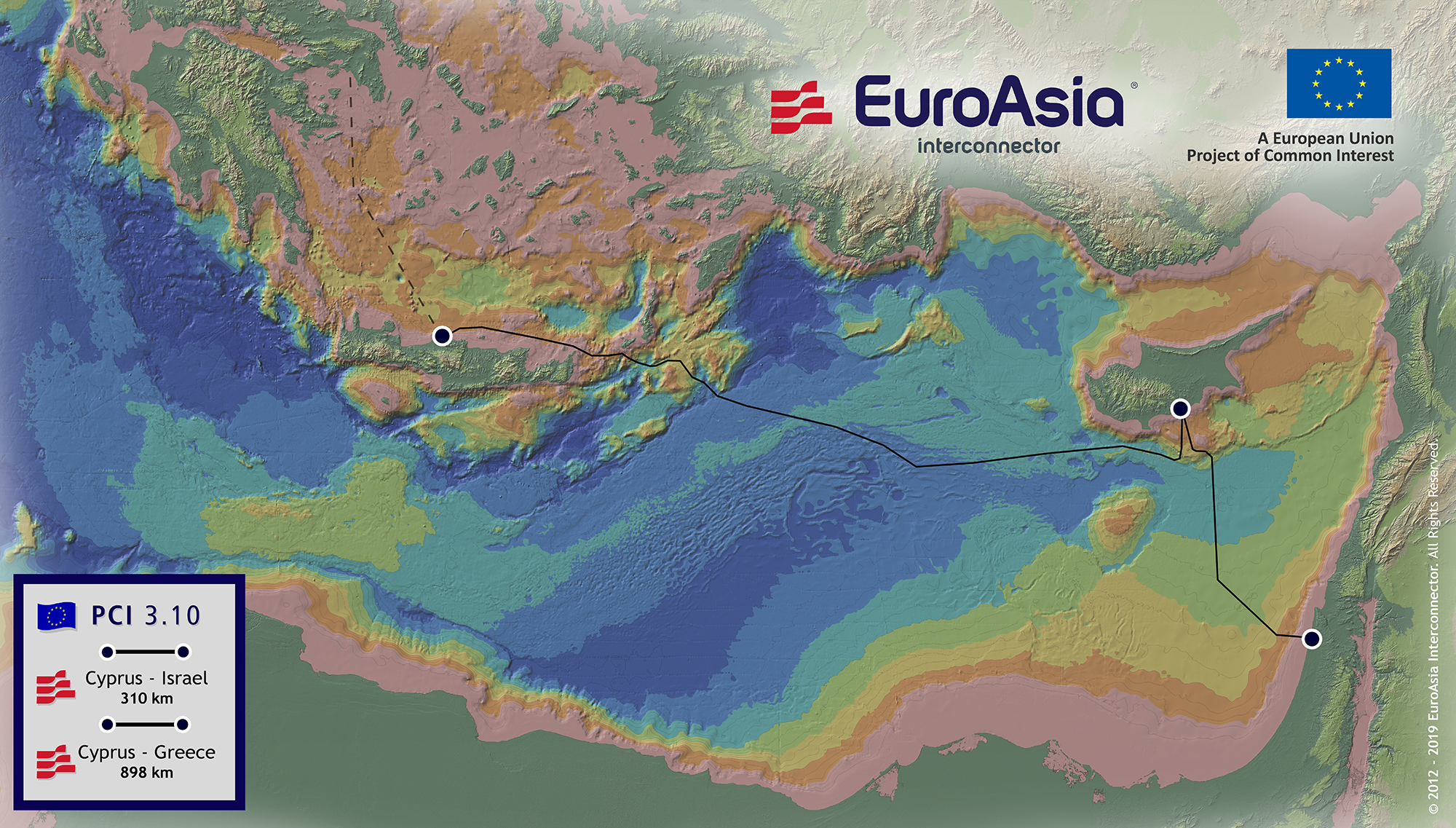
- Transmission System Operator (TSO):
- A Transmission System Operator (TSO) is an entity entrusted with transporting energy in the form of natural gas or electrical power on a national or regional level, using fixed infrastructure. The term is defined by the European Commission.
- Distribution System Operators (DSO):
- Entities responsible for distributing and managing energy from the generation sources to the final consumers. Digitalisation is the key to securing the DSO model, which requires investments in automation, smart meters, real-time systems, big data and data analytics.
- A DNO (Distribution Network Operators) already performs much of the tasks that a DSO does, but there are differences. A conventional distribution network is not an active but a reactive or passive network. Passive distribution networks are designed to accept bulk power from transmission system and distribute it, down the network, to consumers.
- Grid, Microgrids and DERs:
- The power grid is a network for delivering electricity to consumers. The power grid includes generator stations, transmission lines and towers, and individual consumer distribution lines.
- The grid constantly balances the supply and demand for the energy that powers everything from industry to household appliances.
- Electric grids perform three major functions: power generation, transmission, and distribution.
- A microgrid is a small-scale power grid that can operate independently or collaboratively with other small power grids. The practice of using microgrids is known as distributed, dispersed, decentralized, district or embedded energy production.
- Smart Grid is any electrical grid + IT at all levels . Micro Grid is a group of interconnected loads and DERs (Distributed energy resources) within a clearly defined electrical and geographical boundaries witch acts as a single controllable entity with respect to the main grid.
- Distributed energy resources (DERs) are small-scale electricity supply (typically in the range of 3 kW to 50 MW) or demand resources that are interconnected to the electric grid. They are power generation resources and are usually located close to load centers, and can be used individually or in aggregate to provide value to the grid.
- Common examples of DERs include rooftop solar PV units, natural gas turbines, microturbines, wind turbines, biomass generators, fuel cells, tri-generation units, battery storage, electric vehicles (EV) and EV chargers, and demand response applications.
- Distributed energy resources management systems (DERMS) are platforms which helps mostly distribution system operators (DSO) manage their grids that are mainly based on distributed energy resources (DER).
- DERMS are used by utilities and other energy companies to aggregate a large energy load for participation in the demand response market. DERMS can be defined in many ways, depending on the use case and underlying energy asset.
- Kilovolt-Amperes (kV):
- Kilovolt or “kV” means a unit of potential difference equal to 1,000 volts. Kilovolt or “kV” means the potential difference between two points on a conductor carrying a current of one ampere when the power dissipated between the two points is one kilovolt-ampere. Kilovolt means one thousand volts (kV).
- Kilovolt (kVA):
- kVA stands for Kilo-volt-amperes – a term used for the rating of an electrical circuit. kVA is the product of the circuits maximum current and voltage rating. It is also known as Apparent Power.
- kW is the unit of real power and kVA is a unit of apparent power (or real power plus re-active power). The power factor, unless it is defined and known, is therefore an approximate value (typically 0.8), and the kVA value will always be higher than the value for kW.
- A kVA is 1,000 volt-amps. It’s what you get when you multiply the voltage (the force that moves electrons around a circuit) by the amps (electrical current).
- Megavolt-Amperes (MVA):
- MVA or megavolt-amperes is the unit used to measure the apparent power in a circuit. It’s a product of the voltage and current in a circuit.
- 1 kVA is equivalent to 1,000 volts while the 1 MVA is equivalent to 1,000,000 volt-amperes.

